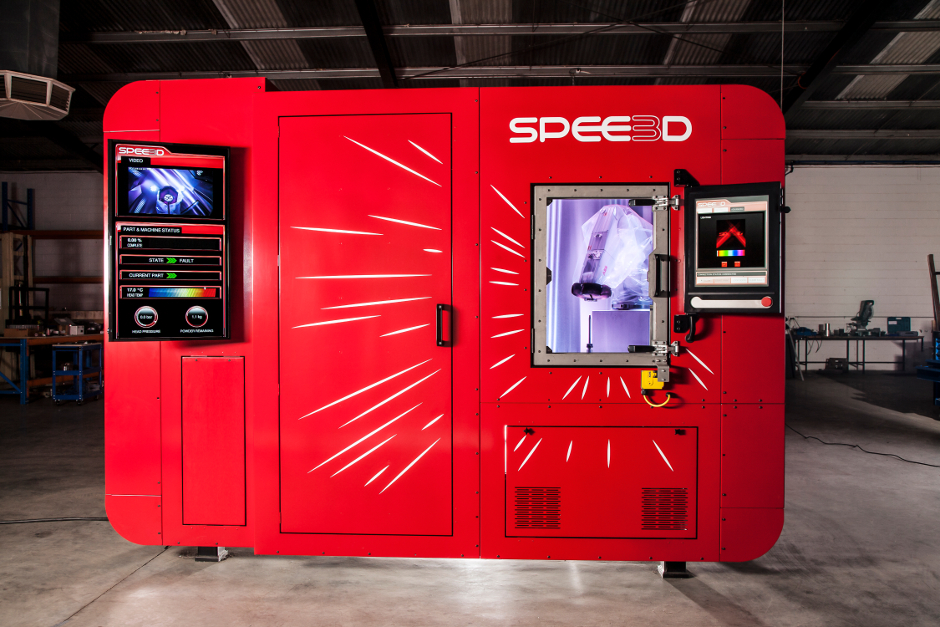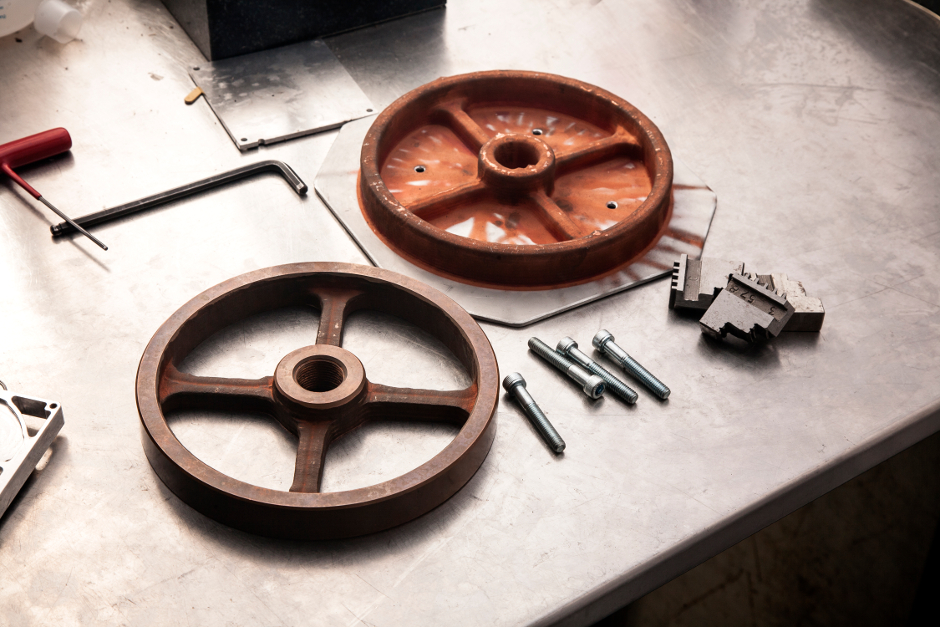
Rather than using heat to melt metal powders, SPEE3D’s patented technology uses supersonic deposition in which a rocket nozzle accelerates air up to three times the speed of sound to deliver manufacturing grade metal and high-density parts.
In doing so, the technology has shown that it can print a flywheel in 11 minutes and 38 seconds compared to the 20 hours it would take with traditional manufacturing. Similarly, results from SPEE3D have shown that a car part can be printed in 20 minutes for $30 instead of taking upwards of 100 hours for $3,000.
Byron Kennedy, CEO and co-founder of SPEE3D, told The Engineer that the underlying technology has been used for many years in the repair world, where metals such as titanium, Inconel, steel, stainless steel, copper, and tantalum are used.
He added that the large casting markets are showing a keen interest in the system and that the company will initially focus on aluminium cast parts.
“Copper is also a material that is very easy for the technology to print at very high speeds, which opens up thermal and electrical conductivity opportunities,” he said via email. “More materials will follow with a particular focus on steel.”
SPEE3D’s process has the advantage of not melting metal particles, so oxidisation is less of an issue compared to laser printing. The system also has a deposition efficiency of over 90 per cent and any undeposited powder is collected external to the printer, said Kennedy.
To build a part, SPEE3D’s software takes a standard .STL file for printing which can be generated with any CAD program.

“Of particular interest is our ability to simulate the part prior to printing,” said Kennedy. “This enables you to see if there are any components that will fail to print and adjust accordingly. Once the simulation is satisfactory a print file is generated that is sent to the printer.”
Flexibility in the system allows for optimised parts, but Kennedy said the company’s focus is making standard parts that are used in industry with no redesign.
“Due to the low cost and high-speed printing, manufacturers will soon realise they can print parts faster and cheaper than they currently CNC or cast,” he said.
“We focus on making parts without support structures in order to make it manufacturing ready. To this degree, we can print 45 degree overhangs with no support, internal hollows, cooling channels etc. Due to the use of an industrial robot we have a lot of flexibility in how we make parts. No longer is there a requirement for layer by layer printing.”
Parts would then be finished in the same way as cast parts, with items such as bearing bores and mating surfaces being machined as required.
According to Kennedy, software presented the biggest challenge to the system’s development.
“It is not difficult to spray metal onto a surface - the real challenge lies in taking an .STL file, simulating the process and converting this into a real part,” he said. “The software is continuing to evolve and we are adding new features all the time as we print more and more parts. Six months ago there were parts we couldn't imagine we could print that we can easily do today.”
SPEE3D is currently installed at Charles Darwin University where the institution is researching new applications for the technology. The company, which is exhibiting at this year's formnext, plans to install printers for demonstrations in Frankfurt, Michigan and Sydney.




Nanogenerator consumes CO2 to generate electricity
Whoopee, they've solved how to keep a light on but not a lot else.